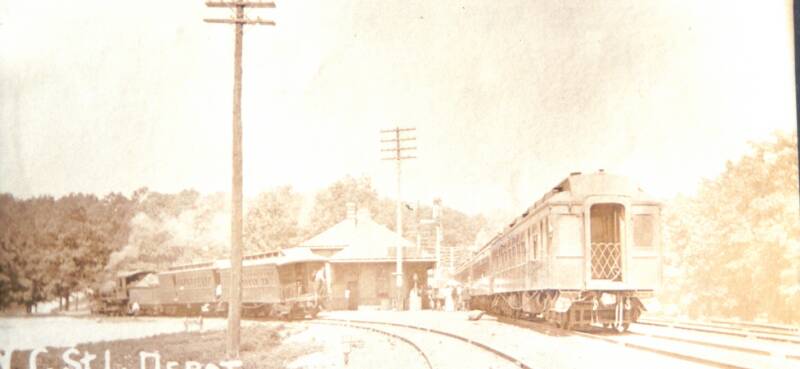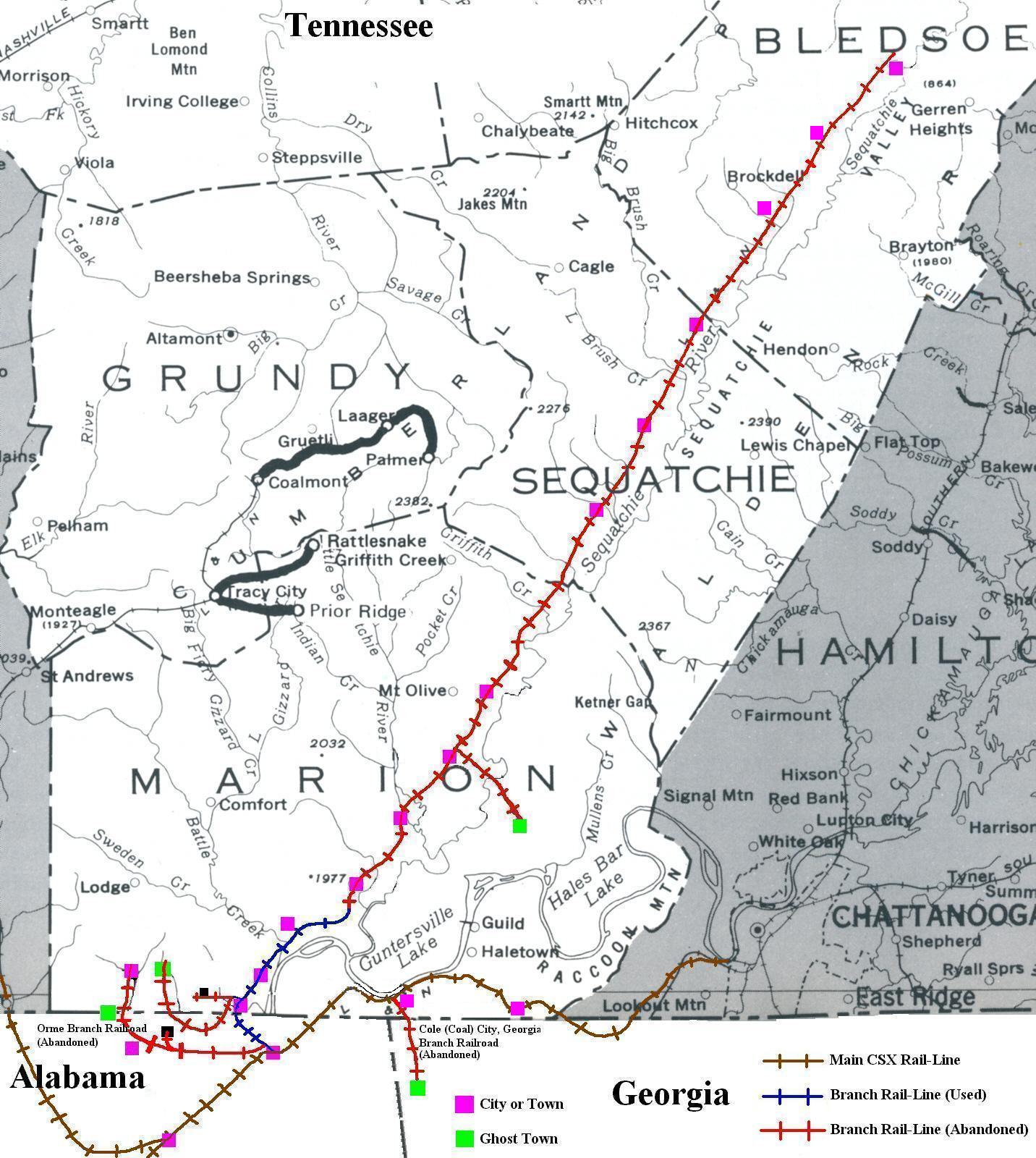



Sequatchie Valley Railroad
A Pictorial Tour!
South Pittsburg Historic Preservation Society, Inc.
Preservation through Determination - Insuring a Place in the Future for Our Heritage!
The Sequatchie Valley Railroad
By: Dennis Lambert
The Jasper Branch Railroad (Sequatchie Valley Railroad) was originally authorized for construction in 1860 and was to be a branch-line of the Nashville & Chattanooga Railroad leading off of the mainline at Bridgeport, Alabama. The coming American Civil War the following year delayed that construction. However, attempts were made by Union forces stationed at Bridgeport in October 1863 to complete the railroad as a means of moving supplies closer to the besieged Union Army at Chattanooga. It is not known how far along they were able to complete the road.
After the war, the railroad was completed to Jasper, Tennessee. The first shipment over the Jasper Branch Railroad was on March 12, 1867 by Owen Russell Beene and consisted of nine bales of cotton. In 1868, Major William Jasper organized the Sequatchie Valley Railroad Company, which would extend the railroad from Jasper to Pikeville, Tennessee. This company managed to extend the line as far as Victoria when the Nashville, Chattanooga & St. Louis Railway purchased the company on January 27, 1877.
The railroad into the Sequatchie Valley was vital to future development of coal mines and coke works in the area. It was also vital in the establishment of the city of South Pittsburg, Tennessee, which was where most of the local iron trade was established. The railroad was later extended to Whitwell in 1887 and to Dunlap in 1888. The last extension was in 1891 to Pikeville, Tennessee a distance of sixty miles from Bridgeport. Before the extension of the railroad, a turntable was used at Jasper to turn the steam locomotive for its trip back down the branch to Bridgeport.
Several depots were built along the line at the different communities. These include Deptford (Richard City), South Pittsburg, Kimball, Jasper, Victoria, Sequatchie, Whitwell, Dunlap, College Station, Lee's and Pikeville. Some of these communities and smaller communities along the line had waiting sheds for passengers instead of the costly depots. Once completed to Pikeville the road became known as the Pikeville Branch Railroad.
A branch railroad known as the Orme (Tennessee) Branch Railroad was built in 1902 and switched off of the Jasper branch about a mile from the Bridgeport, Alabama depot. This line extended about 11-miles to Orme where a mountain of coal was to be mined. The railroad was removed in 1942 after coal was depleted enough from the mountains to no longer warrant the operation of this line. The wood framed depot at Orme still stands today and is one of the few reminders of this once busy railroad.
As for the Pikeville Branch Railroad, rails from below the Jasper depot to Pikeville were pulled up in the mid-1990s. The line, which is now privately owned and renamed the Sequatchie Valley Railroad, only runs from Bridgeport to about two miles east of Jasper. Traffic on the line now consist of about one run a day bringing in raw materials to the manufacturers in Jasper and outside Bridgeport. In addition, many completed products are transferred to the switchyards at Bridgeport for shipment on the CSX Transportation, Inc. mainline.
Today, only two depots on the old Sequatchie Valley Line, not including Bridgeport, have survived to 2005. One depot stands at Victoria and the other at Jasper, Tennessee. The brick depot at Victoria is today a private residence while the one at Jasper now serves as that town's city hall.
Tennessee Highway 28, which traverses along side much of the old rail-bed from Whitwell to Dunlap, Tennessee and from Dunlap to Pikeville, Tennessee along U.S. Highway 127, are, in part, what spelled the end of the railroad from Jasper to Pikeville. These highways opened up a quicker and easier route into the Sequatchie Valley for tractor-trailers and coal trucks, which were much less expensive for transporting coal and other products in and out of the Sequatchie Valley. All along the left (west) side of the highway while driving up the valley can be seen long stretches of the old rail-bed and in some places, the old bridges, piers or culverts. In old town Whitwell you can still see the foundation and sidewalks of the depot.
It is sad that so many branch railroads are now lost forever and nearly forgotten. So many towns in Tennessee and throughout the United States owe their very existence to just such a branch-line. The development of the Sequatchie Valley and communities from Bridgeport, Alabama to Pikeville, Tennessee would not have been possible before the automobile had it not been for the Sequatchie Valley Railroad.
Begin a photographic tour - click on Bridgeport on the below map!
To view towns along main-line and Tracy City Branch please
click on individual towns on map below!
 | ||||||
Click on the different towns on map to see depots and/or related railroad pictures!

This page was last updated: April 20, 2011
Construction started on this section August 23, 2005
Begin Here!
 | ||||